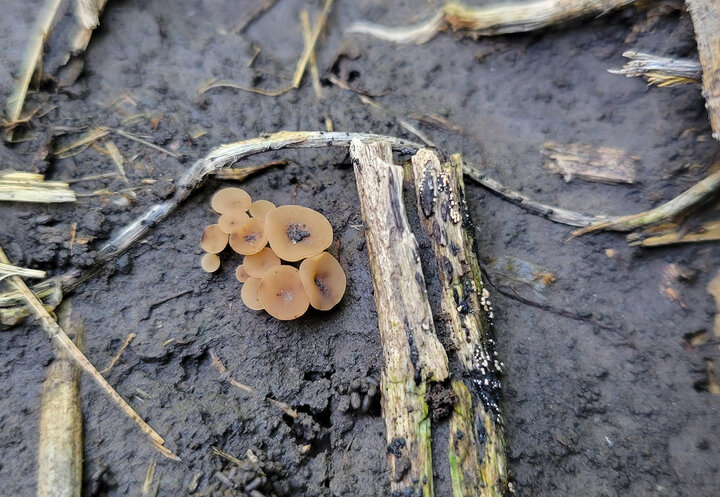Once again we are seeing a lot of white mold in soybean. White mold or Sclerotinia Stem Rot is a disease that can be identified now, but management needs to have occurred previously, during bloom.
One of the main problems with white mold management is that the disease starts earlier in the season during flowering. The actual infection occurs on the senescing flower which the fungus uses as a food source. All infections in soybean typically start at a node. You can even tell when the infection occurred based on how high up the plant the stem lesions and fungal growth are. This year’s cool wet conditions during flowering were favorable for infection. More cool temperatures after infection were favorable for more growth of the fungus.
Symptoms at this point in soybean development will be individual or small pockets of dead or dying plants. Upon close inspection you will see a white cottony fungal growth on the stems which may also include dark black bodies (sclerotia) of the fungus on the stems. Stems of dead plants will be very light (bleached) in color and when dead stems are split, you will often see the sclerotia of the fungus inside.
The optimum temperature for growth of the fungus is 75°F. If temperatures move into the 90s, the disease will not spread much.
Some parameters to consider for your next soybean crop:
- Row spacing: Narrow rows favor early canopy which creates an environment conducive for infection. In some areas more disease is being observed in narrow rows.
- Fungicides: It’s too late now for rescue treatments. Fungicide applications need to be applied during flowering to have any effect on this disease.
- Irrigation: Altering your irrigation at this time will add more stress to the crop as most fields are at peak water use. Any change in irrigation should have been done during flowering, if at all possible.
Diagnosis and Plant Disease Information
As with any disease, correct diagnosis is critical to proper management. If you are uncertain of the cause of damage in your field, I encourage you to have it identified at the University of Nebraska Plant and Pest Diagnostic Clinic.
More information on these and other soybean diseases can be found in the Soybean Section of Plant Disease Management in CropWatch.

Loren Giesler discusses the life cycle and identification of white mold disease in soybean.

